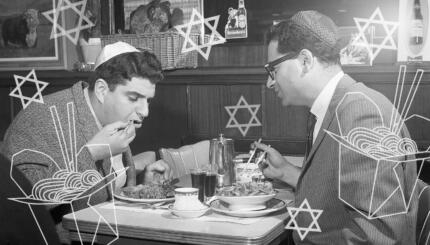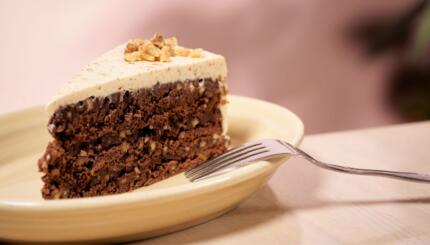We know you love bagels (and we do too), so we thought it was high time to really explore the history of bagels in America, and why they are so Jewish.
So let’s start from the beginning: A bagel is round, has a hole (no, it’s not a donut), and is made from a yeasted dough which is boiled and then baked in a very hot oven. It can be covered with sesame seeds, poppy seeds, all the seeds, or nothing at all. Some people even claim blueberry bagels are a legitimate flavor, but obviously, those people are wrong.
The bagel arrived in the United States with Jewish immigrants from Poland in the late 19th century. Long before it was schmeared with cream cheese and topped with lox, capers, tomatoes, and thinly sliced red onions, it was sold on the streets of New York City’s Lower East Side stacked up on poles or hung from strings — that’s why they have a hole — for people to buy and enjoy on the street. It was simple, comforting peasant food.
The yiddish word for bagel is actually beigel, and it is also theorized that the bagel is a descendent of the German pretzel, which is another yeasted dough bread that is boiled then baked. The boiling and baking process actually means that bagels stay fresher longer, which for poor Jews, was really important.
As Jews immigrated from Europe to North America, many settled in Toronto and Montreal, Canada, which created their own style of bagels distinct from the New York style. Meanwhile in New York City, there were so many bagel makers that Local 338, a bagel makers trade union, was created in 1915.
We can thank the invention of cream cheese in the 1930s, Lender’s Bagels, and 1950s housewives for marrying the bagel with cream cheese and lox, which was first suggested to serve as an appetizer at cocktail parties in Family Circle Magazine:
Split these tender little triumphs in halves and then quarters. Spread with sweet butter and place a small slice of smoked salmon on each. For variations, spread with cream cheese, anchovies or red caviar. (They’re also delicious served as breakfast rolls.)
Eventually the bagel, cream cheese, and lox became a quintessential Sunday morning staple as we know it today. One of the things we love most about bagels is that they are an iconic New York-ish, Jewish, mash-up food that tells an immigrant story through one simple food.
Watch our short video below to learn more. We dare you not to crave a good bagel and schmear after this.





